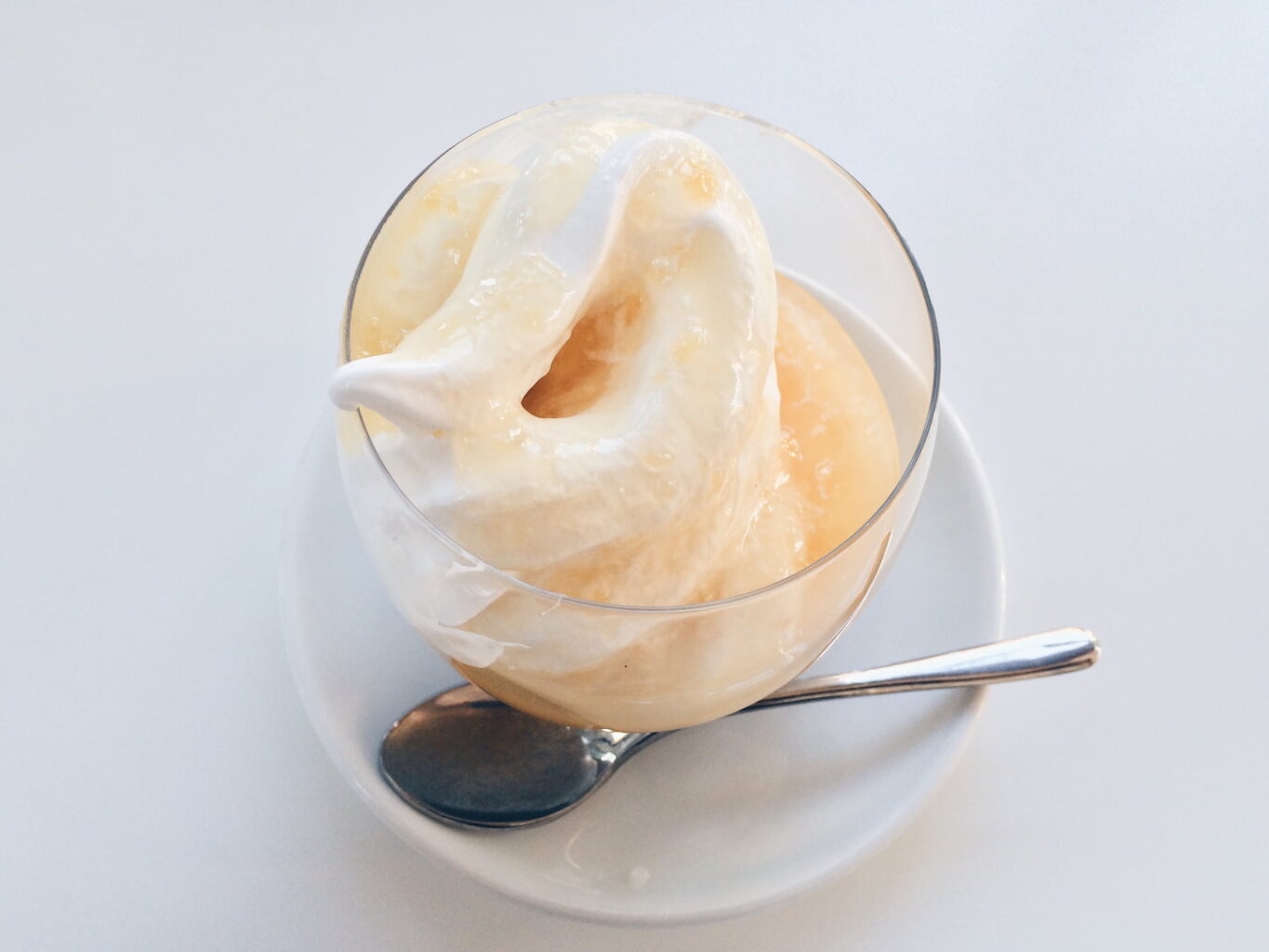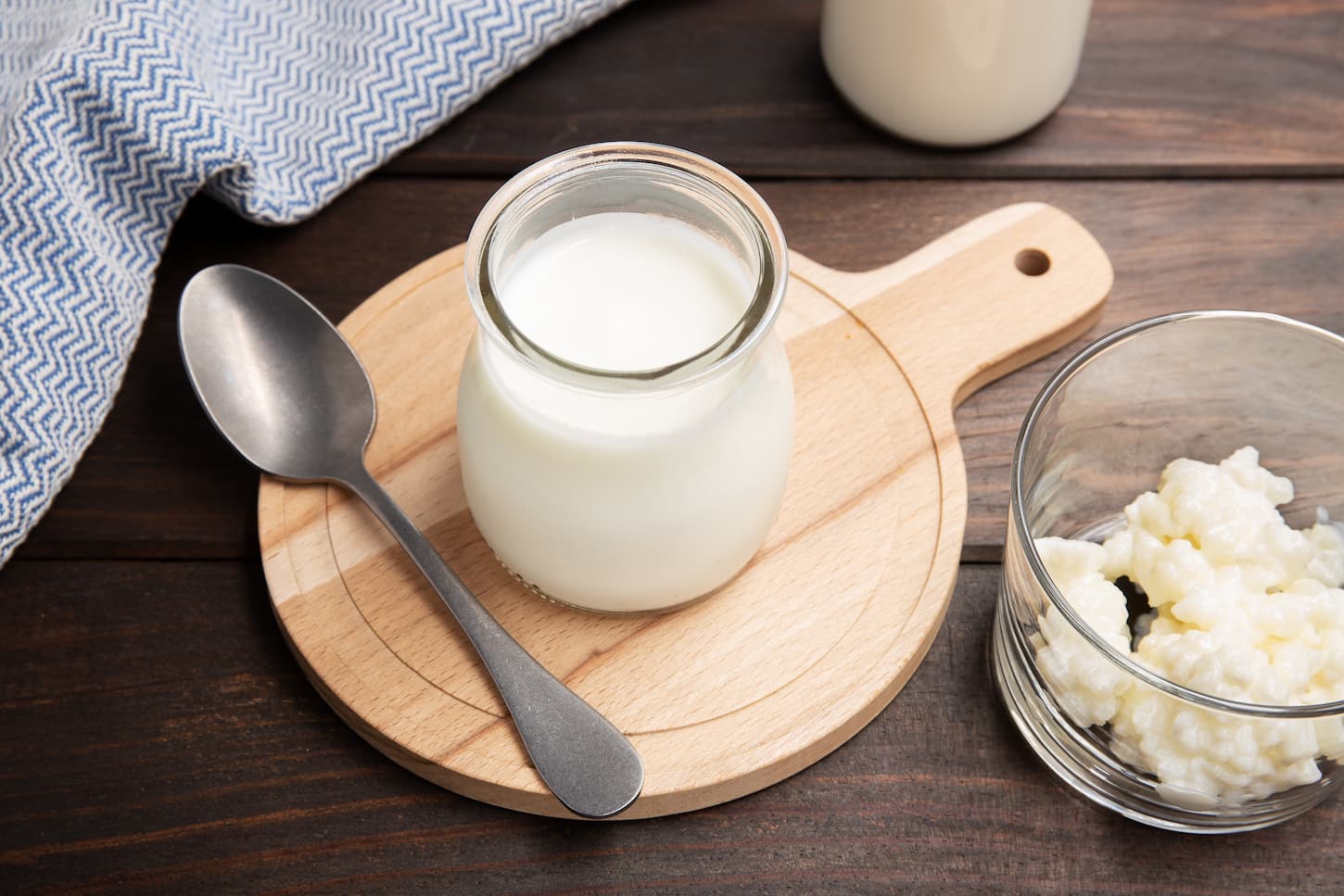While yogurt and kefir both come from fermented milk, they have some differences. For example, kefir is a creamier liquid, whereas yogurt has a thicker consistency. In addition, both contain probiotics that promote healthy digestion, but kefir has a higher content.
Yogurt and kefir are full of healthy nutrients including calcium, protein, and probiotics. These foods usually need to be refrigerated and lasts no more than two weeks before spoiling unless freeze-dried. With freeze-drying, yogurt and kefir are shelf-stable and can be stored for up to 25+ years.
Regardless, both make great candidates for freeze-drying, so much so that the preservation technique is used for astronauts’ food in space. So, let’s dive into the how-to with our complete guide on freeze-drying yogurt and kefir.

Can You Freeze-Dry Yogurt and Kefir?
Both yogurt and kefir can be freeze-dried in either the original form (as yogurt cultures and kefir grains to start new batches in the future) or as delicious snacks from fully prepared yogurt and kefir products. Freeze-dried dairy products can last up to 25-plus years if stored properly.
Yogurt can have high sugar content, impacting how the food freeze-dries. High-sugar foods can be sticky once freeze-dried, so it’s essential to be mindful of ingredients. Aside from its impact on freeze-drying, too much sugar in our diets is unhealthy.
There are plenty of delicious low or no-sugar yogurts available, which are great candidates for freeze-drying and better for our overall health.
Freeze-drying yogurt and kefir have many benefits. First, it avoids waste by allowing us to preserve food that has a short shelf life. We can also hold on to all the beautiful nutrients that yogurt and kefir contain as freeze-drying seals the food’s quality.
Of course, the extra months and years of freeze-drying extend the life of dairy products and means that we can prepare for the future and enjoy yogurt or kefir from our home supply whenever we want.
Freeze-dried yogurt makes a delicious snack that we can take anywhere without refrigeration. We can also mix freeze-dried yogurt into foods such as cereal to increase the nutritional content of protein and calcium.
Freeze-dried yogurt cultures and kefir grains make an excellent resource to keep us self-reliant and make batches of yogurt and kefir with minimal effort.
How to Freeze-Dry Yogurt and Kefir
Depending on the type of yogurt or kefir products, there are different methods for freeze-drying. For example, we can separate formed yogurt and kefir into bitesize drops or cubes. Then, after freezing, it can be powdered.
Yogurt cultures and kefir grains can be started and freeze-dried for future batches. To help us decide how to freeze-dry our food, we’ve separated the dairy products into their most popular freeze-dried forms.
Steps to freeze-dry kefir and yogurt
Yogurt and kefir are excellent for freeze-drying into tasty snacks such as yogurt drops or kefir cubes. These treats are ideal for kids and can be created in lots of fun colors, shapes, and flavors. The process is super simple.
- Fill a piping bag or plastic food bag with the kids’ favorite yogurt or kefir.
- Cut off the end or a corner of the bag to make a hole for piping the kefir or yogurt.
- Pipe circular drops around the size of a nickel on a baking sheet on the freeze-dryer tray.
- Pop it in the freeze dryer and enjoy bite-size treats for you and the family.
- If piping yogurt (or kefir) sounds like too much work, don’t worry. You can just scoop it into silicone ice cube trays. Many silicone ice cube trays are even safe to use in freeze-dryers.
It’s also possible to fill trays with yogurt; we can break up the yogurt sheet once dried. Keep large pieces for snacks or smash-up freeze-dried yogurt into powder. Then, we can rehydrate it later.

How to freeze-dry yogurt cultures
It’s best to freeze-dry yogurt cultures on a large sheet, then powder and store them until needed. Many yogurt-making recipes utilize yogurt cultures or starters as a powder. Freeze-drying our supply will mean we have a stock of cultures ready to make yogurt whenever we like.
Yogurt cultures are the bacteria used to make yogurt; this is created by fermenting the sugars in milk. Many people purchase yogurt cultures as freeze-dried powder commercially.
It’s possible to recreate this process at home and use a freeze-dryer to preserve cultures for long-term use. Yogurt cultures are also known as yogurt starters.
How to freeze-dry kefir grains
Freeze-drying kefir grains require separating the grains from the liquid. Grains are similar in shape and appearance to cauliflower florets but smaller. They are white with a gelatinous texture.
- To prepare grains for freeze-drying, rinse them with cool water.
- Next, dry them off using a paper towel to remove excess water.
- After patting down the grains, we can spread them on a tray and put them in a freeze-dryer.
- Run the freeze-dryer and store the kefir grains in a Mylar bag for long-term storage.
Go ahead and reconstitute them in the future when you’re ready to start making kefir again.
Can You Freeze-Dry Yogurt or Kefir Without a Freeze-Dryer?
Yogurt and kefir cannot be freeze-dried for long-term storage without a freeze-dryer. Although there are alternative methods for freeze-drying foods without a machine, it’s not recommended. While DIY freeze-drying efforts can get some similar results, the shelf-life result won’t likely be as long.
Freeze-dryers will preserve the nutrients and active cultures without damaging them, so it’s easy to reconstitute them in the future successfully. However, it’s impossible to guarantee this quality or the same extended shelf life as other methods.
How Long Do Yogurt and Kefir Take to Freeze Dry?
Yogurt and kefir usually take between 24-hours to 42-hours to freeze dry. Therefore, when first attempting to freeze-dry these dairy products, we recommend being available to check progress after 24-hours as freeze-drying time may need to be extended based on the desired end product.
Freeze-drying times for yogurt and kefir are variable as both can have different consistencies. Thicker consistency yogurts or kefirs will take less time to freeze-dry than more liquidy versions.
For example, Greek yogurt is thicker than regular yogurt, as making Greek yogurt involves draining off excess whey and water. Greek yogurt takes less time to freeze-dry than regular yogurt, mostly because it has less water to extract.
Well, unless you overload the tray with either one, anyway! Then it’ll just take forever no matter what you use.
Elements such as the size of the batch and the amount of yogurt or freeze-dried kefir can impact the time it takes to freeze-dry. A handy feature of freeze-drying machines is sensors that can tell when our yogurt or kefir is ready and beep to let us know.
If we aren’t happy with the end products, continue to freeze-dry the food for a few more hours.
How Long Do Freeze-Dried Yogurt and Kefir Last?
Yogurt and kefir, which are freeze-dried, can last up to 25 years or more. Timing the process will ensure that we can reconstitute food successfully. It’s also important that food is stored correctly to prevent spoilage.
If freeze-dried yogurt is stored in an unopened container, it can last up to 25 years, or maybe more. Therefore, the storage container must prevent damaging elements from reaching the yogurt, such as light, moisture, air, or insects.
Mylar bags are ideal when vacuum-sealed in a rodent-proof casing. A #10 can is the perfect container for long-term storage for larger batches, especially if you already have access to a can sealer.
I don’t own a can sealer, so I tend to stick to Mylar bags. When I’m feeling fancy, I’ll also use Mason jars – here’s how I do it: How to Safely Store Freeze-dried Foods in Mason Jars (vacuum sealer).
Kefir grains and yogurt cultures can be stored long-term after freeze-drying and used to make more batches. However, the effectiveness of freeze-dried living cultures can reduce over an extended period – this means that the longer it has been stored, the more powder that we will need to start a new batch.
Once we open our freeze-dried yogurt or kefir, it will reduce its shelf life; for this reason, it’s good to seal foods into portions. This way, we can match one batch at a time without compromising large quantities of freeze-dried foods.
How to Reconstitute Freeze-Dried Yogurt or Kefir
To reconstitute freeze-dried yogurt or kefir, hydrate with water. For fully formed yogurt or kefir, it’s best to start from a powdered state and mix with water gradually until it’s the right consistency. Kefir grains and yogurt cultures require a more specialized method to reconstitute.
If you want to get your yogurt and kefir reconstituted precisely to the level they were before you freeze-dried them, you’ll need to calculate the ratio of water to add by comparing pre-freeze-dried weights and volumes to the post-freeze-dried weights and volumes.

How to reconstitute freeze-dried yogurt cultures
Freeze-dried cultures can be used as a powder in the yogurt-making process; they do not require rehydration before mixing with other ingredients. Powdered yogurt cultures are often used in homemade yogurt batches.
The instructions below outline how yogurt cultures can be reconstituted into yogurt:
- Boil the milk to destroy any harmful bacteria – use the milk for making yogurt.
- Cool the milk to a lukewarm temperature, around 104 -113 Fahrenheit. This will begin the fermentation process.
- Gently stir in the freeze-dried yogurt culture powder.
- Place the covered yogurt mixture in a warm area, allowing the healthy bacteria to develop and create a recognizable yogurt texture and flavor. This process can happen overnight but may take up to 24-hours depending on the ingredients used.
- Once the yogurt has fermented to the correct level while stored in the refrigerator, it will last two weeks.
The above method will allow us to create yogurt at home and the taste and texture we like. However, it’s important not to leave the yogurt to ferment for too long a period as this can give it a strong acidy taste and lead to spoiled yogurt.
We don’t need a unique yogurt incubator to reconstitute our cultures. Allowing our yogurt to ferment in a covered pan while in a warm environment will suffice.
Personally, I like using my Instant Pot to make yogurt – it’s got a setting and it holds the milk at the perfect temperature.
How to reconstitute freeze-dried kefir grains
To reconstitute kefir grains, here are a few steps to follow to start the fermentation process; reaching the ideal end product requires time and patience.
- Rehydrate the grains in fresh cold water for around two hours. This allows the grains to reform their shape and fermentation traits.
- For 24-hours, allow the grains to ferment in a small amount of milk at room temperature.
- If the milk has thickened, this is a sign the kefirs are active and reconstituted.
After freeze-drying, it can take a while for kefir grains to metabolize correctly; the Kefir will taste unbalanced. Continue fermenting the Kefir as outlined above until the end product is balanced to speed up the metabolism. This can take anywhere from two to ten days.
If you notice that some reconstituted grains are discolored – for example, yellow, brown, or crumbly, these can be removed from the batch.

Key Takeaways and Next Steps
There’s no need to worry about a short, refrigerated shelf-life for yogurt or Kefir. Instead, we can quickly transform these nutritious dairy products into long-term food supply staples using a freeze-dryer.
Minimal preparation is required for freeze-drying, and within a day or two, we will be able to add batches of yogurt and Kefir to our food stores. In addition, we can save money by making tasty yogurt snacks at home that can last in our pantry for as long as you can keep your hands off them.
Reconstituting these gut-friendly foods is a straightforward process that will allow you to enjoy yogurt and Kefir made in our kitchen for years.
Now that you know more about freeze-drying (and reconstituting) all this wonderful dairy, make sure you read this other article I wrote on How to Freeze Dry Candy and Sweets at Home!
Resources
When learning about parenting or sleep training techniques, it’s essential to learn from many reputable sources. These are the sources used in this article and our research to be more informed as parents.
- Cultures, Yemoos Nourishing. “Milk Kefir FAQ: Reviving, Sharing and Storing Grains.” Yemoos Nourishing Cultures, www.yemoos.com/pages/milk-kefir-faq-reviving-sharing-storing-grains. Accessed 25 May 2022.
- Jaron. “How To Freeze Kefir Grains – The Best Way.” Foods Guy, 19 May 2021, foodsguy.com/freeze-kefir-grains/.
- “How the Freeze-Dried Kefir and Yogurt Starter Cultures Are Made?” Natprosel, 15 May 2021, www.yogurtathome.com/single-post/2020/02/16/how-the-freeze-dried-kefir-and-yogurt-starter-cultures-are-made.
